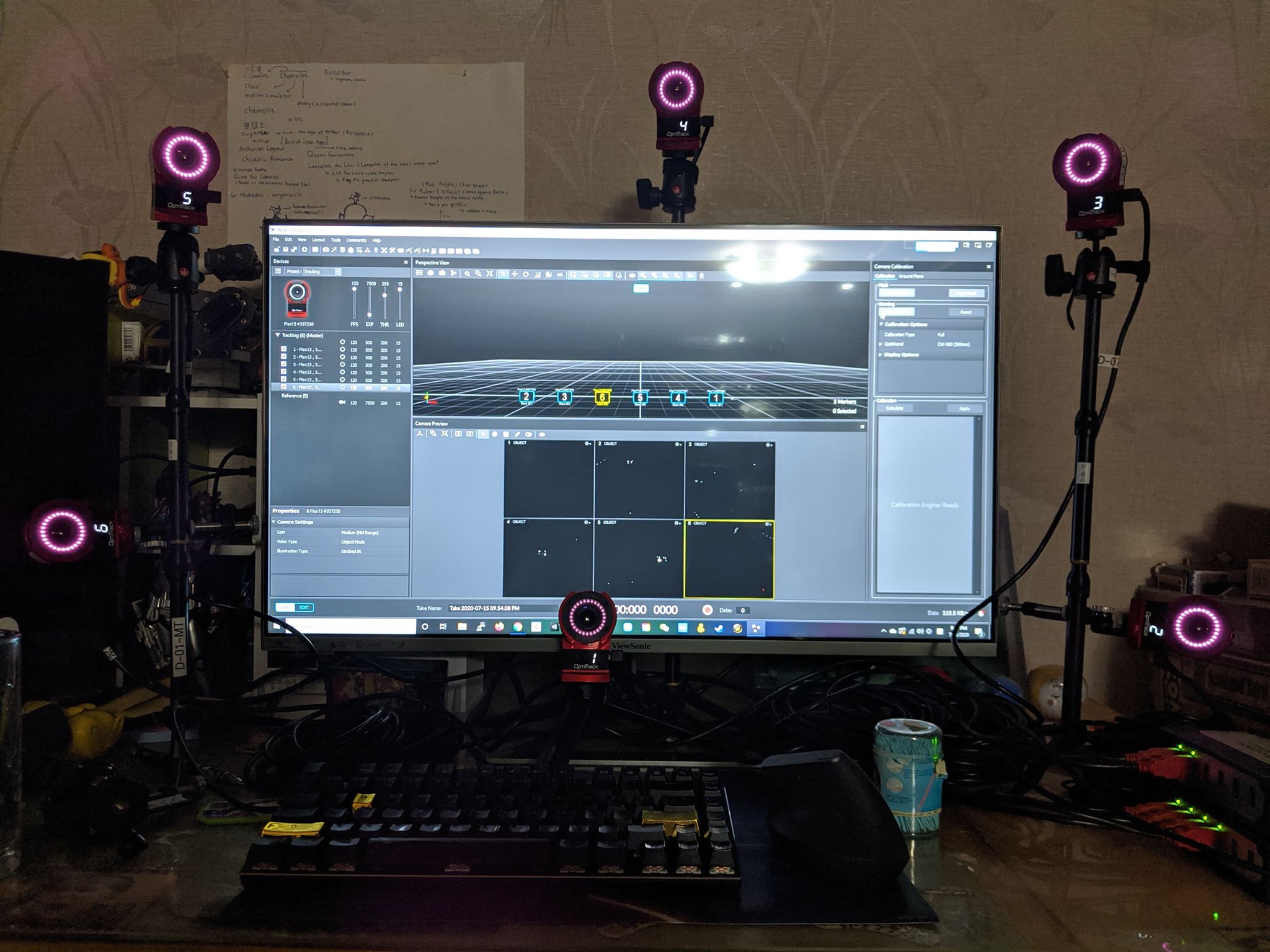After the flight ticket was finally approved, I pack up all the technology I can have my hands on including a mocap kit. The kit is made of 8 Optitrack cameras, an industrial-grade mocap technology that I have worked closely since 2008. The first experiment is a vertical tracking setup usually used for face tracking for projection mapping.
I had hoped to use this compact setup to do something crazy with OBS and Zoom. However, the cameras were too close to my face, they need to be spread out more. I had to step back a little to get the tracking work properly.

In 2017, after 2.5 years of development, we installed a mocap system at Parsons School of Design. My two mocap assistants at the time, James W. Berry and Santangelo Williams, and I were experimenting with the system. Our school has over 30 different design programs, my job was to find ways so that our mocap studio can benefit students beyond animation and game design. One creative afternoon, James had a full-body tracking suit on after a demo session. I mapped the skeleton data to a rigged 3D model from the asset store and turned a rigid body into a virtual camera. Santangelo took over the camera and became an acting coach. I recorded the screen. It was such an interesting and collaborative experience.
Because of the pandemic, digital filming becomes a heated topic. From Star Wars Mandalorian to indie sci-fi film, the idea of combining live-action and digital sets has become a popular and accessible technique that everyone, especially tech-savvy filmmakers, can experiment inside of their own apartment while #stayathome.